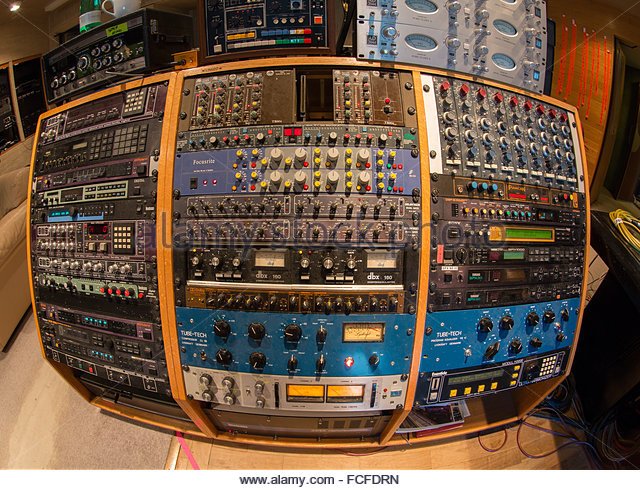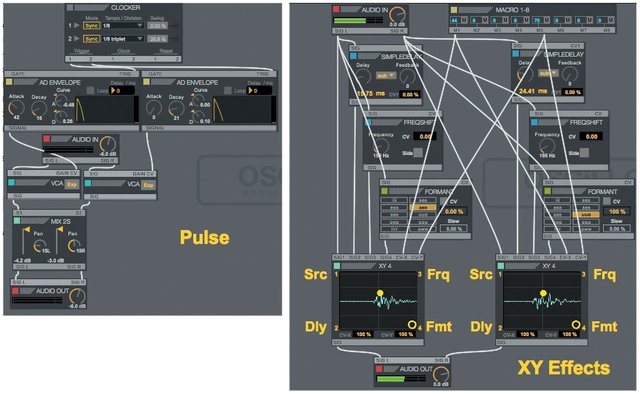EFFECT PROCESSORS
What are audio effects?
Audio effects are analog or digital devices that are used to alter the sound of a musical instrument or other audio source intentionally or we can simply say that audio effects alters how audio sounds.
Audio effects can be barely noticeable or extreme, and they can be used in live or recording situations.
A perfect example of audio effects are the “stomp boxes” that most electric players use in other to achieve their desired sound.
A musician can create a unique tone and enhance their music in many ways by chaining together many different types of audio effects.
It is know dought that many popular music has benefited from the creative use of audio effects, most especially electronic liberal us of these interesting device.
Effect processors add the third dimension to a mix. Room size and complexity are indicated by the way the sound reacts in an acoustic space. The echoes and delays that happen after the original sound emanates from the source tells the brain what the surrounding environment is like. All of the effects processors (echoes, reverberation, and chorus effects) revolve around one thing: The delay. In their simplest form, all of these effects are merely combinations of single or multiple delays combined together in proper proportion with the original signal.
Wet versus Dry:-
Wet and dry are two terms that refer to the amount of effected signal that is blended with the original dry signal, and the relationship between wet and dry is quantified in a percentage; 100%. Wet refers to a signal that contains none of the original (dry) signal. A sound that is completely dry has none of the effect return combine with it (0 %).
Patching effects devices:-
It is best to connect the output of your mixer's aux bus or effects send bus to the input of the effect of the effects unit. Next, connect the output of the effect of the mixer's effects return or into an available mixer channel.
Most effect processors have a meter on the input for proper level adjustment, and many effects processors have a final output level adjustment. When using effects it is always desirable to keep the channel track dry and blend the 100% wet return with it for the best musical impact and control. But in a small setup, you might have to run the effects inline, doing all the blending from dry to wet within the effects unit. This can work well, but it is best to keep the dry and wet controls separate.
Simple delay effects:-
This effect does just what it's name says; it hears a sound and then waits for a while before it reproduces it. Current delays are simply digital recorders that digitally records the incoming signal, and then play same back with a time delay selected by the user. Delay parameters vary from unit to unit, but most delays have a range of delay from a portion of a millisecond up to one or most seconds. This is called delay time or delay length and is typically variable in increment of a millisecond.
Almost all digital delays are much more that simple echo units. within the delay are all of the controls you need to produce slapback, repeating echo, doubling, chorusing, flanging, phase shifting, some primitive reverb sounds, and any hybrid variation you can dream up.
Slapback delay;-
This is the simplest form of delay. The slapback delay is a single repeat of the signal. It's delay time is anything above about 35 ms. Any single repeat with a delay time of less than 35 ms is called a double.
To achieve a slapback from a delay, simple adjust adjust the delay time and return the delayed signal up, either on the return channel or on the mix control within the delay.
For a single slapback delay, feedback and modulation are set to their positions. Slapback delays of between 150 ms and about 300 ms are very effective and common for creating a big vocal or guitar sound.
Slapback delay can be turned into a repeating delay. This smoothes out the sound of a track even more and is accomplished through the use of the regeneration control, which is also called feedback or repeat.
Regeneration feeds the delay back into the input of the delay unit, so we hear the original, the delay, and then a delay of the delayed signal.
N/B The higher you turn up the feedback the more time the delay is repeated and practically speaking, anything above three repeats gets too muddy and does more musical harm than good.
Doubling and Tripling:-
Combining a signal delay of less than 35 ms with the original track is called doubling while the combination of two separate delays of less than 35 ms with the original track is called tripling. The short delays can combine with the original track to sound like two people or instruments on the same part.
When doubling and tripling, use prime numbers for the delay times. And as we all know, prime numbers can only be divided by one and itself. Using prime numbers minimizes the potential hollowness caused by phase problems between the original and delayed signals, typically providing a warmer sound that sounds better in stereo and mono.
Modulation:-
The modulation control on a delay is for creating chorusing, flanging, and phase shifting effects. The key factor here is the LFO (low frequency oscillator); its function is to continually vary the delay time. The LFO is usually capable of varying the delay from the setting indicated by the delay time to half of that value and back. Sometimes the LFO control is labelled modulation.
N/B: As the LFO is slowing down and speeding up the delay, it's speeding and slowing down the playback of the delayed signal. So we can also say that the modulation actually lowers and raises the pitch in exactly the same way that a tape recorder does if the speed is lowered and raised.
Flanger:-
A flanger has a sound similar to the phase shifter, except it has more variation and colour. The primary delay setting on a flanger is typically about 20 ms. The LFO varies the delay from near 0 ms to 20 ms and back continually. Flangers and phase shifters work very well on guitars and Rhodes-type keyboard sounds. They provide a rich blend and interesting harmonic motion.
chorus:-
The factor that differentiates a chorus from the other delay effects is again the delay time. The typical delay time for a chorus is about 15 to 35 ms, with the LFO and speed set for the richest effect for the particular instrument voice or song. With these longer delay times, as the LFO varies, we actually hear a slight pitch change. the longer delays also create more of a difference in attack time which also enhances the chorus effect.
Since the chorus gets its name from the fact that it's simulating the pitch and time variation that exists within a choir, it might seem obvious that a chorus works great on background vocals. Chorus is also an excellent effect for guitar and keyboard sounds.
The is much to discuss when it comes to effect processors. We will be looking at software effects, dynamic effects and others in our next article.
Thanks for reading!!
Reference
About effect processors



Wow... Amazing and perfect @jamesub
Thanks